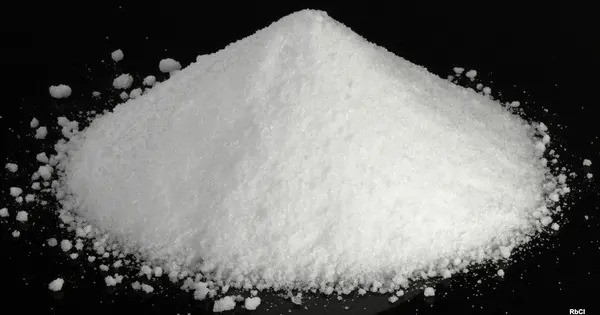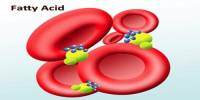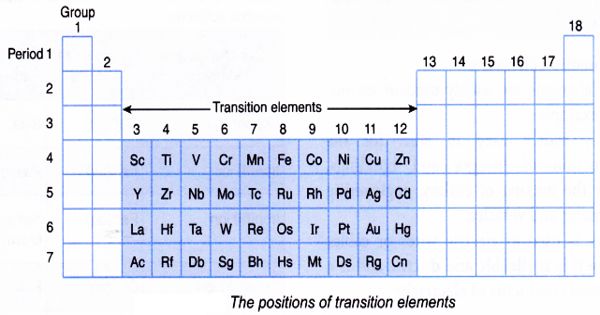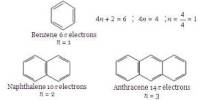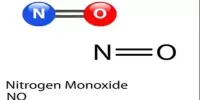Rubidium chloride is the chemical compound with the formula RbCl. It is an inorganic compound that is often used in various chemical applications. This alkali metal halide salt is composed of rubidium and chlorine, and finds diverse uses ranging from electrochemistry to molecular biology.
Properties
- Chemical formula: RbCl
- Molar mass: 120.921 g/mol
- Appearance: white crystals hygroscopic
- Density: 2.80 g/cm3 (25 °C), 2.088 g/mL (750 °C)
- Melting point: 718 °C (1,324 °F; 991 K)
- Boiling point: 1,390 °C (2,530 °F; 1,660 K)
- Solubility in water: 77 g/100mL (0 °C); 130 g/100 mL (100 °C)
- Solubility in methanol: 1.41 g/100 mL
Structure
Like other alkali metal halides, rubidium chloride has a face-centered cubic lattice structure.
Synthesis and reaction
The most common preparation of pure rubidium chloride involves the reaction of its hydroxide with hydrochloric acid, followed by recrystallization:
RbOH + HCl → RbCl + H2O
Because RbCl is hygroscopic, it must be protected from atmospheric moisture, e.g. using a desiccator. RbCl is primarily used in laboratories. Therefore, numerous suppliers produce it in smaller quantities as needed. It is offered in a variety of forms for chemical and biomedical research.
Rubidium chloride reacts with sulfuric acid to give rubidium hydrogen sulfate.
Radioactivity
Every 18 mg of rubidium chloride is equivalent to approximately one banana equivalent dose due to the large fraction (27.8%) of naturally-occurring radioactive isotope rubidium-87.
Uses
Rubidium chloride is used as a gasoline additive to improve its octane number. It is used in laboratories for various chemical syntheses and reactions. Sometimes used in research involving spectroscopy or in the production of certain types of glasses and ceramics.
Rubidium chloride has been shown to modify coupling between circadian oscillators via reduced photaic input to the suprachiasmatic nuclei. The outcome is a more equalized circadian rhythm, even for stressed organisms.
Occurrences
- Natural Sources: Rubidium chloride is not found in significant amounts in nature as a pure compound. Instead, rubidium is found in minerals such as lepidolite, pollucite, and carnallite. It is usually extracted from these minerals or produced synthetically.
- Industrial Production: Rubidium chloride is commercially prepared by reacting rubidium carbonate (Rb₂CO₃) with hydrochloric acid (HCl).
